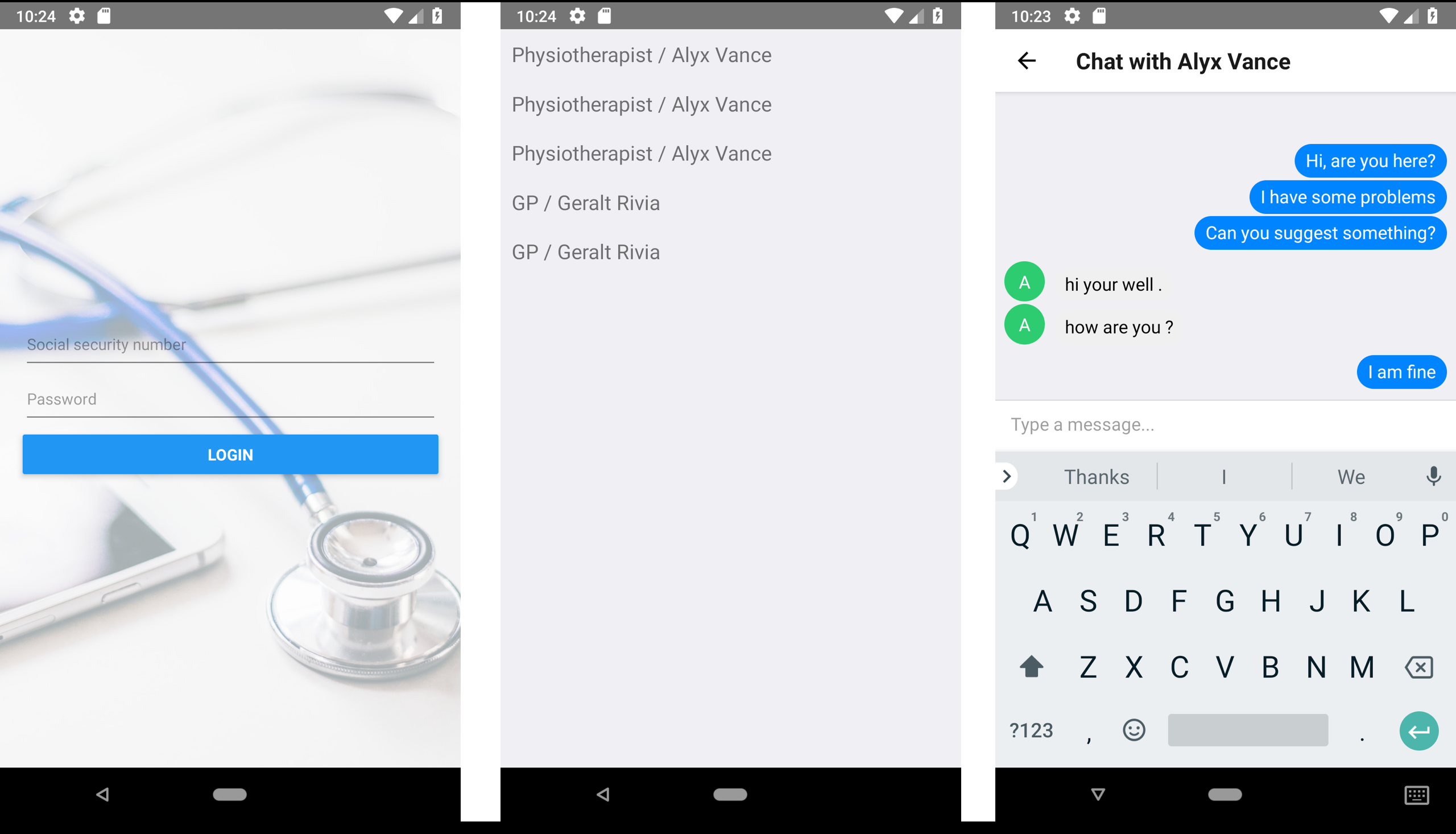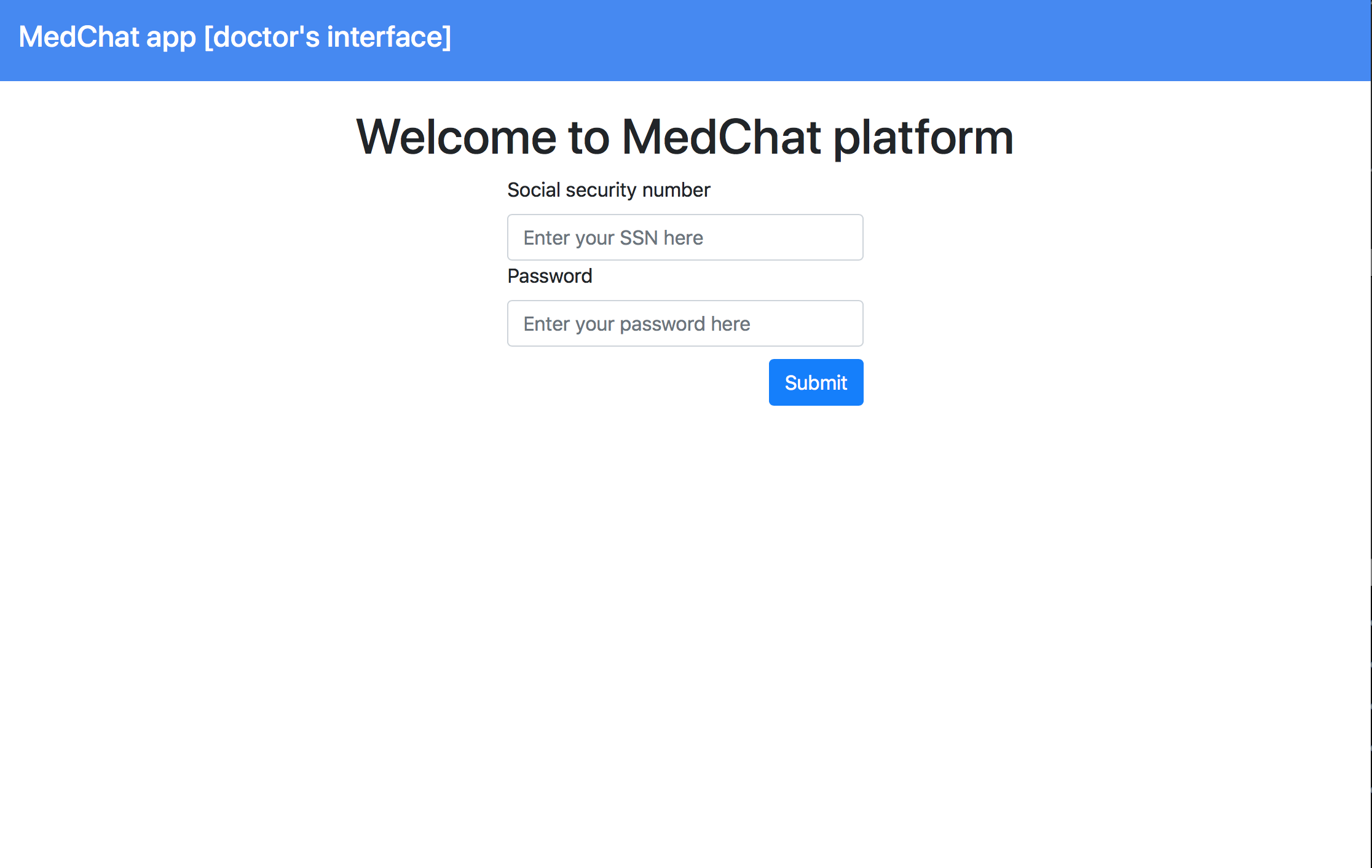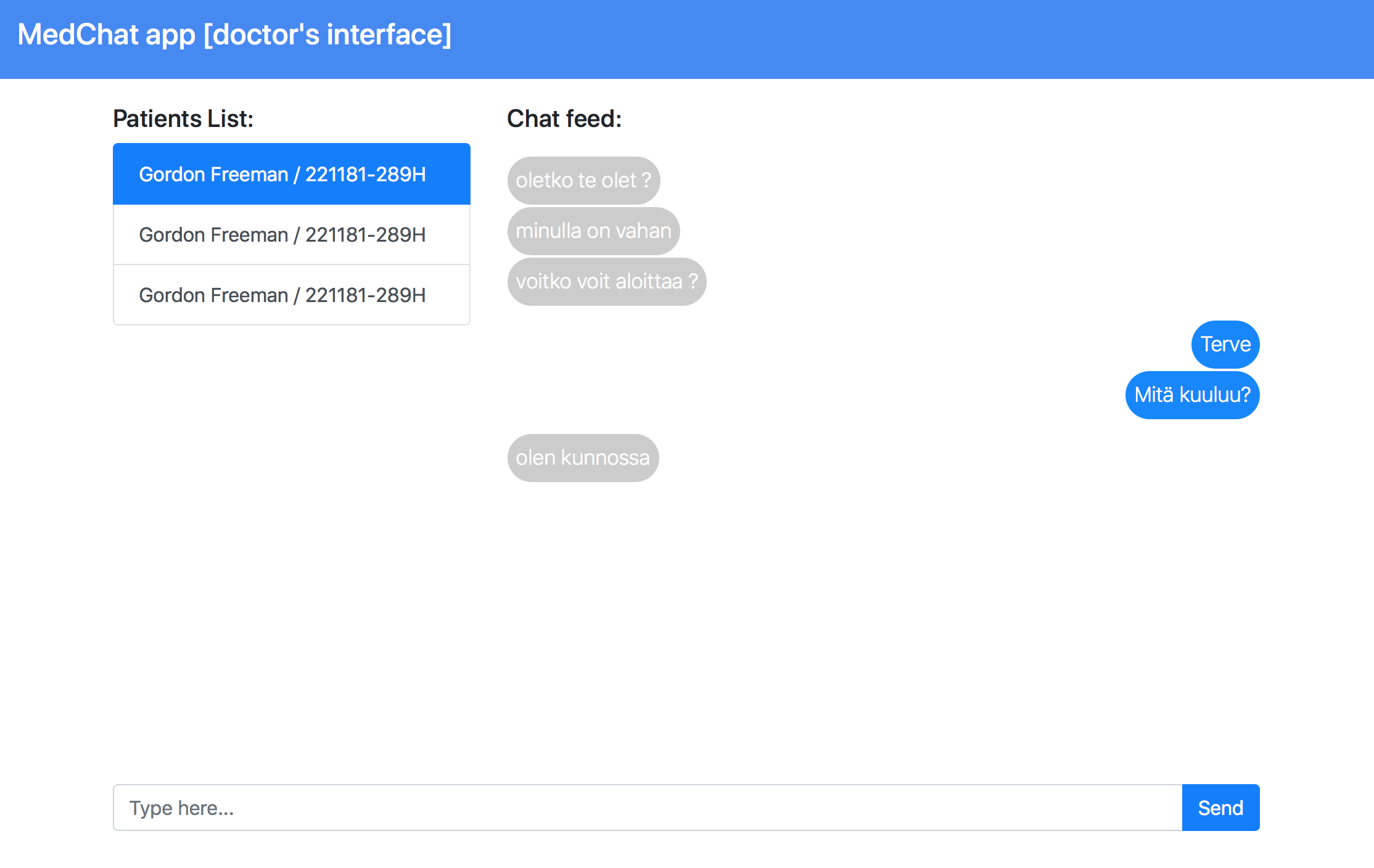This project is the second winning solution from Open Track @ Oulu Health Hack, June 15-17, 2018. The main idea of this project was to develop a real-time chat for patient-doctor communication when both of them speak different languages.
Firstly, I have developed a patient's mobile app, doctor's interface and the back-end in React Native, ReactJS and Node.JS respectively. For the real-time communication, I used Socket.IO. I used MongoDB as a database.
I trained a baseline for sequence-to-sequence neural machine translation for English-Finnish and Finnish-English and wrapped them in a REST API micro-service using Flask.
At the moment I do not have a fully working translation, however, it works to some extend with basic sentences. Furthermore, the project infrastructure is ready and thus simply requires better translation model (big corpus, a lot of waiting time, GPUs and experiments).
- Clone this repository including recursive modules:
git clone --recursive https://github.com/lext/medchat_app.git - You must have Docker, Android studio, ReactJS, React Native and pymongo installed.
- When you have installed the dependencies, go to translation/ and run the script
fetch_data.sh. This will download and unpack the train set for the NMT model. These data will be stored in translation/nmt_train/ - Download the pre-trained models from here and save them to translation/nmt_train/. WARNING: The names of the models are swapped!!!! I had a bug in saving the models, so, instead of en-fin model, I actually have fin-eng. I take this into account in my server codes. This still needs to be fixed. You can also train the model if you have a GPU. Follow the instructions in this README.
- Once you have the train data and the pre-trained models, go to translation/deploy_srv/ and execute
run_api.shto build the container. This script will build a docker image and execute the api server. If everything is fine, you will see that your flask REST API is running on0.0.0.0:5000. Close the running instance withCtrl-Cand go to the next step. - Now, when the translation micro-services has been built, we can proceed to the building of the backend. For that, got to srv/ and simply execute
sh build_app.sh. PressCtrl-Cif you are on Mac and enter your sudo password if you are in Ubuntu. If everything went well, then you will see something like this:
medchat_db | 2018-06-14T13:37:27.890+0000 I NETWORK [listener] connection accepted from 172.20.0.3:45070 #239 (2 connections now open)
medchat_db | 2018-06-14T13:37:27.904+0000 I NETWORK [conn238] end connection 172.20.0.3:45068 (1 connection now open)
medchat_db | 2018-06-14T13:37:27.904+0000 I NETWORK [conn239] end connection 172.20.0.3:45070 (0 connections now open)
medchat_db | 2018-06-18T08:12:07.464+0000 I COMMAND [ftdc] serverStatus was very slow: { after basic: 0, after asserts: 0, after backgroundFlushing: 0, after connections: 0, after dur: 0, after extra_info: 0, after globalLock: 0, after locks: 0, after logicalSessionRecordCache: 0, after network: 0, after opLatencies: 0, after opcounters: 0, after opcountersRepl: 0, after repl: 0, after security: 0, after storageEngine: 0, after tcmalloc: 0, after transactions: 0, after wiredTiger: 106, at end: 4701 }
medchat_server |
medchat_server | > medchat-backend@0.0.0 start /usr/src/app
medchat_server | > nodemon app.js
medchat_server |
medchat_server | [nodemon] 1.17.5
medchat_server | [nodemon] to restart at any time, enter `rs`
medchat_server | [nodemon] watching: *.*
medchat_server | [nodemon] starting `node app.js`
medchat_server | [[08:32:14.143]] [LOG] listening on 0.0.0.0:3000
nmt_api | Reading lines...
nmt_api | Indexing words...
nmt_api | * Serving Flask app "server" (lazy loading)
nmt_api | * Environment: production
nmt_api | WARNING: Do not use the development server in a production environment.
nmt_api | Use a production WSGI server instead.
nmt_api | * Debug mode: off
nmt_api | * Running on http://0.0.0.0:5000/ (Press CTRL+C to quit)
- Run and android emulator and execute the following command to allow your app to connect to the backend:
adb reverse tcp:3000 tcp:3000. - Go to the folder client and run the development server with
npm install && npm start. In another terminal executereact-native run-android. You will see that your app will be launched in the emulator. - Go to the folder doctor_interface and run the doctor's environment by executing
npm start. Ideally, this needs to be dockerized. - Enjoy!
I manage to run everything on a MacBook Pro 2015 and the app still works quite fast and reliable without any GPU.
Currently, the while thing looks like this:
- App background
- Authors of the icons which I used in my pitching presentation and have to refer to:




